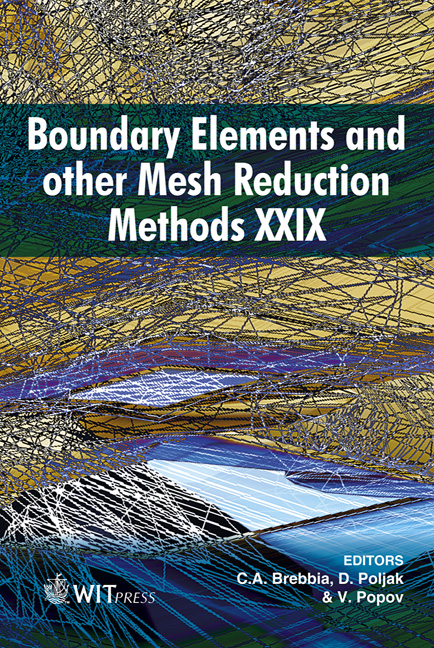Hybrid BEM For The Early Stage Of A 3D Unsteady Heat Diffusion Process
Price
Free (open access)
Transaction
Volume
44
Pages
10
Published
2007
Size
453 kb
Paper DOI
10.2495/BE070101
Copyright
WIT Press
Author(s)
A. Peratta & V. Popov
Abstract
This article presents a hybrid three dimensional dual reciprocity boundary element method (BEM) for solving the early stage of a 3D time dependent convective heat transfer equation in non-homogeneous media. The method addresses the problem in which the initial distribution of temperature presents a discontinuous jump at the interface between two regions of very dissimilar diffusion coefficients. The goal of this hybrid formulation is to sort out the numerical inconvenience of different time scales and apparent large flux during early time by combining the 3D BEM with a series of 1D semi-analytical profiles of the time dependent heat diffusion equation, employing a two-level finite difference time integration scheme. This article presents the theoretical background, and one 3D test example. The formulation provided offers convenient advantages for relatively large scale models and complex 3D geometries. 1 Introduction The problem of transient heat transport through 3D non-homogeneous media represents a real challenge for any standard numerical approach. A particular difficult situation is when the initial distribution of temperature presents a discontinuous jump, and this discontinuity is located at the interface between two regions A and B, as shown in Fig. 1(a), of very dissimilar diffusion coefficients, ie. differing in few to many orders of magnitude. Suppose that A is a region of very low conductivity with initially high temperature and characteristic size LA, embedded in region B, highly conductive, which is initially at lower temperature. As time passes by, there is a faint energy release from the high temperature region and thermal energy is quickly conveyed by convection and diffusion throughout region B. In view of the different diffusivities a boundary layer-type profile of
Keywords





